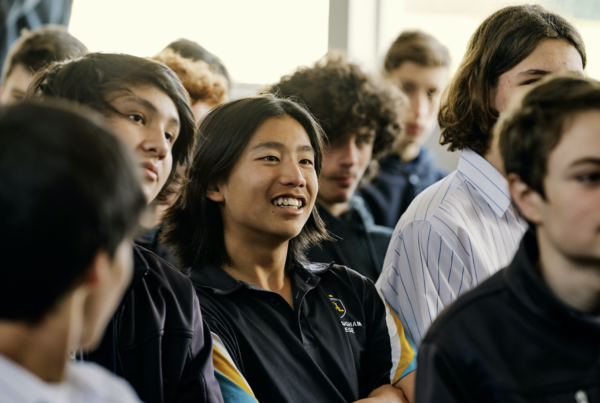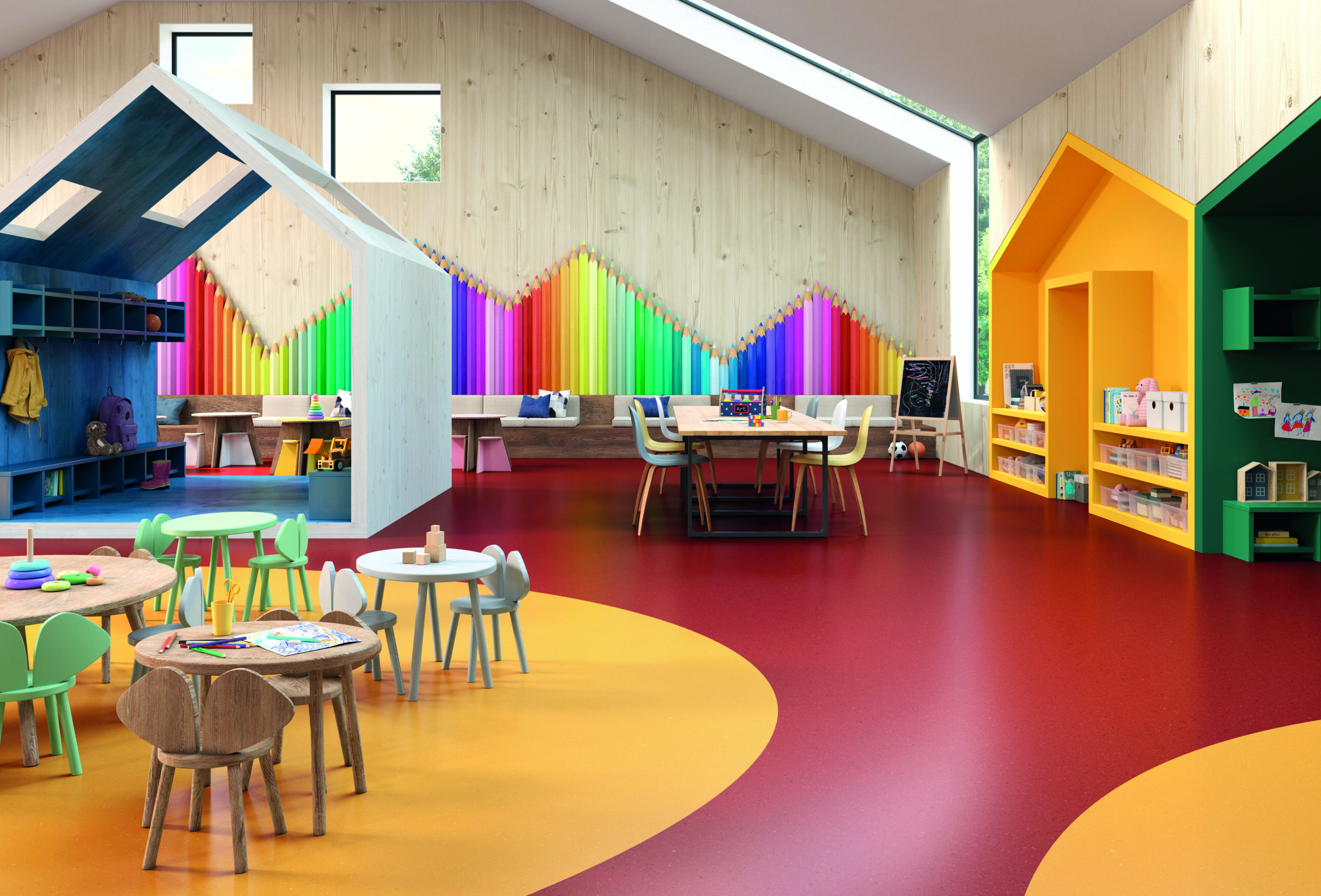In the wake of the unprecedented disruption in the education system brought on by the pandemic, students are finally returning to the classroom – in many cases after nearly two years of remote and hybrid learning. This prolonged lack of in-classroom education has impacted school administrators, teachers, parents, and, perhaps most profoundly, students. In the latter’s case, the result has often been decreased levels of engagement and a diminished passion for learning. To counteract these effects, many educators are looking for ways to actively re-engage students and bring joy back to the classroom and the process of learning.
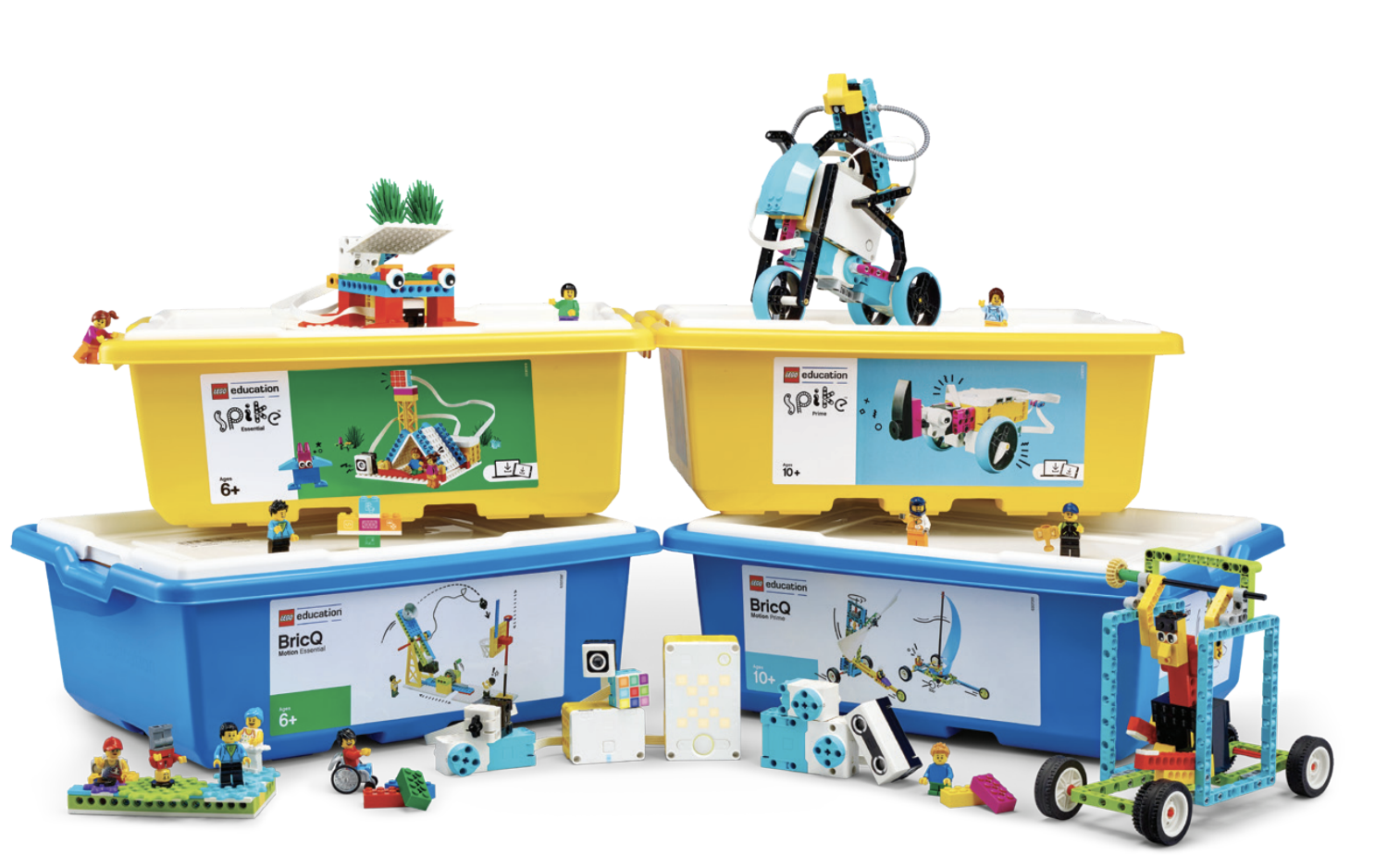
To improve learning outcomes and inspire students, more and more schools are recognising the benefits of hands-on learning and the power of purposeful play. These proven approaches have the potential to open the door to more joyful learning – when learning is more joyful, it is more meaningful, motivating, and memorable. By introducing hands-on learning and purposeful play into the classroom, teachers can not only generate enthusiasm, but they can also help encourage a lifelong love of learning and nurture vital 21st century STEAM skills that better position students for future successes.
Reinvigorating collaboration, curiosity, and creativity
Studies show that learning through play encourages students to connect ideas, nurture creativity, and apply their burgeoning knowledge and skills in new and exciting ways. Inspiring joyful experiences in the classroom can help children develop a range of skills that are essential to putting them on the path to becoming lifelong learners.
With in-person collaboration drastically limited over the past two years, many students simply have not had the opportunity to interact with peers, friends, or teachers. Purposeful play fosters an environment where students can freely collaborate and explore ideas together. These group interactions are a great way for students to develop essential communication skills and build the confidence necessary to re-establish connections with peers, teachers, and their studies.
Purposeful play also helps students spark their curiosity. Inquisitiveness is one of the key catalysts for a lifelong passion for learning and an indicator of overall wellbeing. Studies have shown that curiosity is often linked with positive emotions, lower levels of anxiety, and greater psychological well-being. By embracing hands-on learning, teachers can encourage inquisitiveness and empower students to explore out-of-the-box ideas, often resulting in “aha” classroom moments that can take lessons in bold new directions.
As ongoing innovations in automation and artificial intelligence reshape the workforce and automate many previously manual jobs, uniquely human skills like creativity, critical thinking, and empathy are more essential than ever for long-term success. Purposeful play is a highly effective way to help build these critical skills and establish a positive learning environment that deepens students’ level of engagement with lessons, inspires creative exploration, and promotes problemsolving skills that allow them to connect their learning back to the real world.
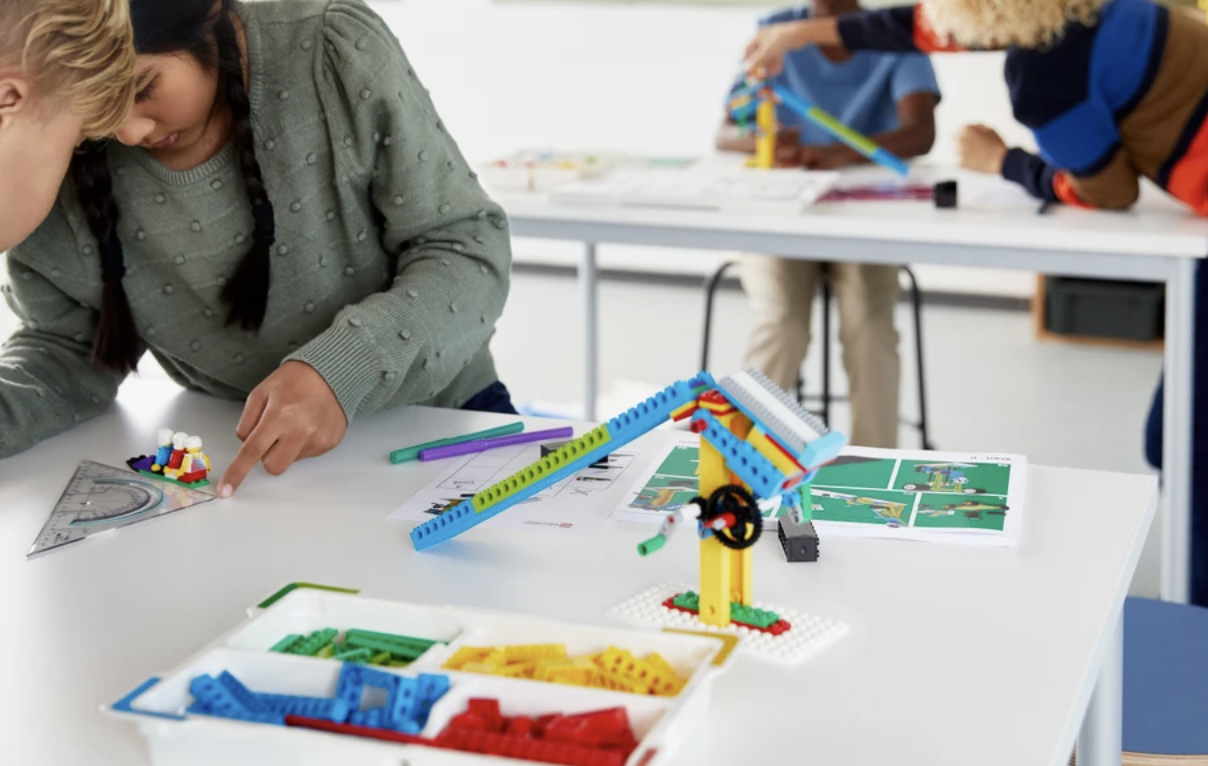
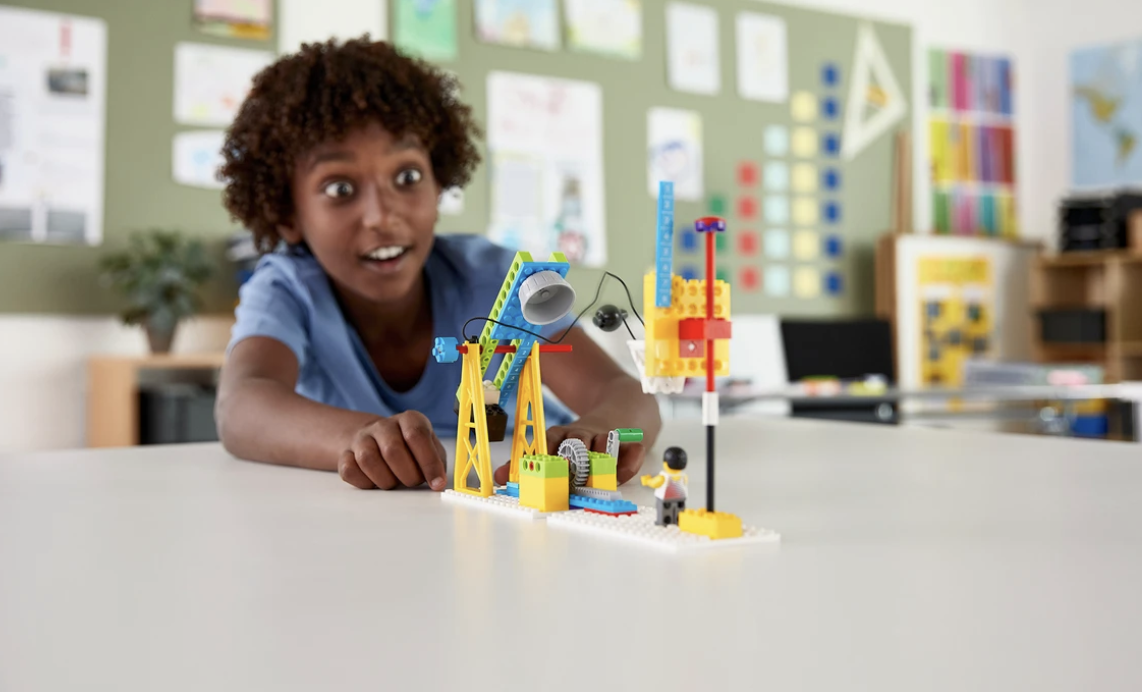
Building bridges between the familiar and the unfamiliar
One of the most effective ways to cultivate a joyful learning environment and help students master vital 21st century skills like collaboration, curiosity, and creativity is to introduce hands-on learning solutions that make abstract subjects more understandable and relatable. Topics like physical science, coding, and computer science can be intimidating and unfamiliar to many students, but as the digital evolution accelerates, it is crucial that students master these subjects for longterm success. The numbers back this up, with one study showing that 80 per cent of future jobs will require science, technology, and math skills.* LEGO® Education bridges the familiar with the unfamiliar by introducing these challenging subjects in an engaging, hands-on way. By leveraging familiar LEGO® bricks and elements, and combining them with digital technology and standards-aligned lessons, LEGO Education provides educators with a range of solutions designed specifically to help students to become more confident learners and foster the skills tomorrow’s careers demand.
The LEGO® Learning System helps students become confident, lifelong learners
To help instructors meet students wherever they are in their learning journey, regardless of ability, LEGO® Education has developed the LEGO® Learning System. This scalable system offers a range of hands-on, playful STEAM learning experiences that creates an environment where active, collaborative learners can future-proof their skills and spark a love for learning that lasts a lifetime.
Featuring a range of interconnected solutions that work seamlessly together, the LEGO Learning System makes STEAM learning easier to implement at the classroom, school, and district levels. The intuitive, inclusive, and highly adaptable system helps students of all ages develop essential skills as they move from simple explorations to increasingly complex real-world challenges.
Within the LEGO Learning System, teachers will find solutions such as LEGO® Education SPIKE™ Essential and LEGO® Education SPIKE™ Prime. Designed for as early as kindergarten to grade five, SPIKE Essential engages students in hands-on investigation of computer science through everyday themes, relatable minifigures, and familiar LEGO elements. It helps students solve problems through storytelling while contributing to their literacy, math, and social-emotional development. For older students in grades six through eight, there’s SPIKE Prime, which integrate building, prototyping, and storytelling to facilitate multi-modal experiences that help students learn STEAM concepts more quickly and at a deeper level. It combines colorful LEGO elements, easy-to-use hardware, and an intuitive drag-and-drop coding experience. SPIKE Prime opens a wealth of learning possibilities, from easy-entry projects to more advanced lessons that include the option to explore text-based coding with Python. When deployed together, these adaptable solutions can unlock learning opportunities, build confidence, empower every student to succeed, and reignite a joy for learning.
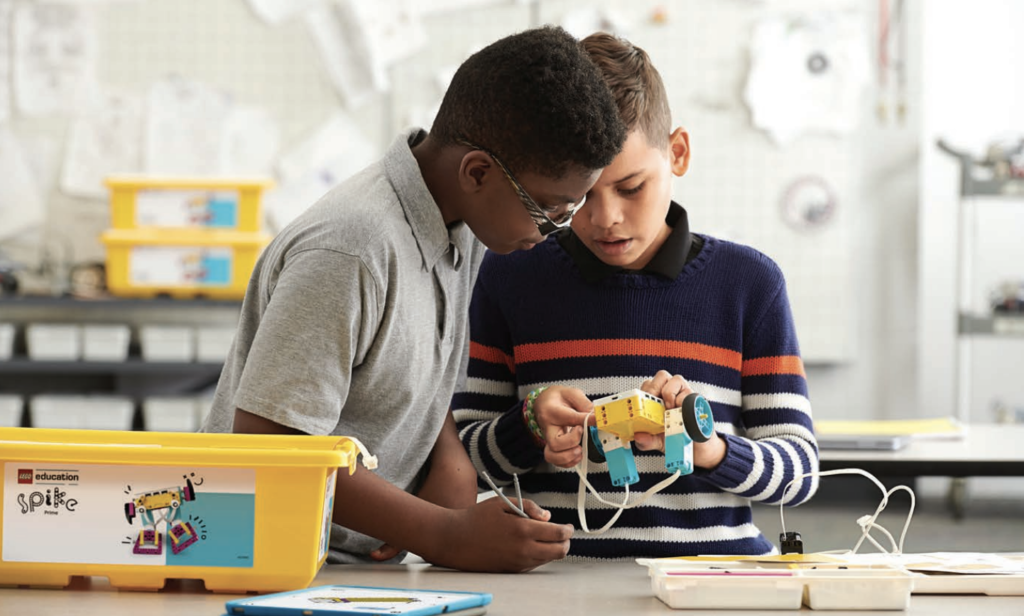
Now is the time to bring joy back to learning
Understandably, both students and educators the world over are struggling to re-engage with classroom learning as well as each other, increasing the importance of reintroducing joy and fun into the learning process. At this critical juncture, it is an ideal time for teachers to take the steps to fuel the natural curiosity that gets students excited and passionate about learning. Collectively we have an opportunity to rethink learning by creating positive classroom environments that help students build confidence and resilience, support their social and emotional well-being, and develop critical skills like problem-solving, creativity, collaboration, and communication. While instructors face many challenges as students return to classrooms, the solutions delivered through the LEGO Learning System go a long way toward creating an environment where knowledge grows, skills blossom, and students become engaged, enthusiastic learners.








